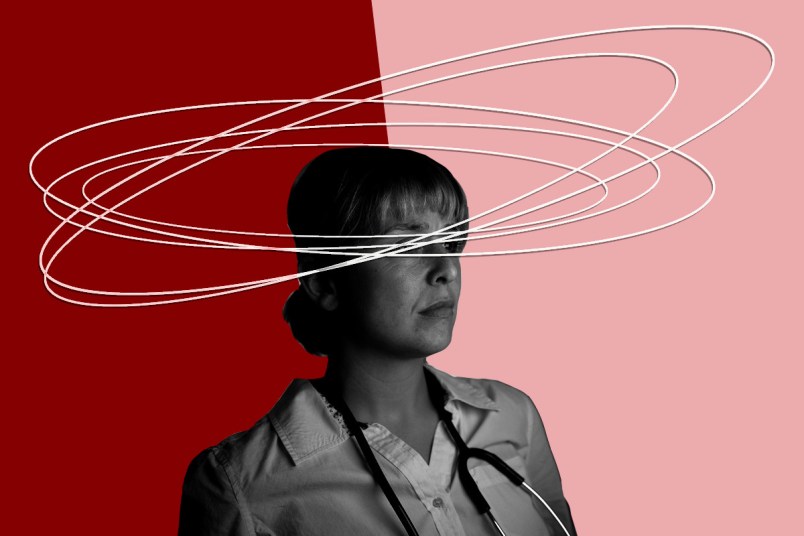Over the last 48 hours, federal judges have split on a fundamental question determining when doctors have to perform abortions amid medical emergencies, a dispute that could reach the Supreme Court.
On Tuesday, a Texas judge ruled that Biden administration guidance asserting that doctors must perform abortions in emergencies — regardless of state bans — is illegitimate overreach and that the federal law underlying the guidance does not limit the state’s new trigger ban.
A day later, an Idaho judge ruled just the opposite: that the state’s near-total trigger ban, due to come online Thursday, is in impossible conflict with the federal law underlying the administration guidance. The federal law then wins out under the Supremacy Clause.
The Texas judge, Trump appointee James Wesley Hendrix, blocked the Biden guidance from being enforced in Texas and against members of two anti-abortion physician groups nationwide. The Idaho judge, Clinton appointee B. Lynn Winmill, nixed the Idaho abortion ban in so far as it conflicts with the medical care mandated by the Emergency Medical Treatment and Labor Act (EMTALA).
The dispute is unlikely to be settled on appeal. The Idaho case would go to the Ninth Circuit Court of Appeals, long a liberal stronghold, though former President Donald Trump made some inroads with a clutch of appointments. The Texas case would go to the uber-right wing Fifth Circuit. Barring surprises, the Ninth Circuit is likely to uphold Winmill’s ruling, and the Fifth Circuit to uphold Hendrix’s. That could set up a Supreme Court showdown.
Health and Human Services Secretary Xavier Becerra sent the administration’s guidance on EMTALA in July, shortly after the Supreme Court overturned the constitutional right to an abortion (though the government argues that this memo is very similar to the one it sent out last year).
The crux of the memo is this: “If a physician believes that a pregnant patient presenting at an emergency department is experiencing an emergency medical condition as defined by EMTALA, and that abortion is the stabilizing treatment necessary to resolve that condition, the physician must provide that treatment. When a state law prohibits abortion and does not include an exception for the life and health of the pregnant person — or draws the exception more narrowly than EMTALA’s emergency medical condition definition — that state law is preempted.”
EMTALA applies to every hospital that has an emergency department and participates in Medicare.
Idaho
In the Idaho case, the Biden administration sued the state, seeking to block its new trigger law when it runs afoul of EMTALA.
The Idaho trigger law criminalizes abortion in most circumstances, making performing the procedure a felony punishable by two to five years in prison. It affords only a narrow affirmative defense that could help a doctor who’d performed an abortion avoid conviction: she could argue that the procedure was “necessary to prevent the death of the pregnant woman.”
But that’s a “cold comfort,” Winmill writes, given that the doctor would still have to persuade a jury and go through the stress and expense of a trial. He also expands at length on the potential risks faced by patients if doctors feel they must let dangerous complications worsen until patients’ lives are clearly threatened.
“Healthcare providers can seldom know the imminency of death because medicine rarely works in absolutes,” he writes.
Besides — EMTALA calls for emergency action in a wider set of circumstances than imminent death. Under EMTALA, the physicians must provide “stabilizing treatment” in the case of an “emergency medical condition” — which it defines as including “placing the health of the individual (or, with respect to a pregnant woman, the health of the woman or her unborn child) in serious jeopardy,” “serious impairment to bodily functions” and “serious dysfunction of any bodily organ or part.”
Thus, Winmill concludes, the Idaho law and this federal statute are in conflict. The Supremacy Clause gives the federal law the edge over the state one, so he blocked the trigger ban when it conflicts with EMTALA’s mandate.
Texas
Texas and the two groups of anti-abortion physicians sued the Biden administration in this case, saying that the guidance — which they call the “abortion mandate” — seeks to subvert “the Supreme Court’s holding in Dobbs and states’ authority to regulate abortion.”
While the Biden administration in the Idaho case was compelled to show that the trigger law would force noncompliance with EMTALA, it tries to argue the opposite here: that the Texas law does not run afoul of EMTALA, and that doing away with the administration’s guidance is meaningless, since it naturally flows from the underlying statute.
The Texas law does not criminalize abortions when the patient “has a life-threatening physical condition aggravated by, caused by, or arising from a pregnancy that places the female at risk of death or poses a serious risk of substantial impairment of a major bodily function unless the abortion is performed or induced.”
The government argues that Texas has not identified any medical situation that “falls into any gap between the text of the two statutes,” and thus lacks standing.
The judge disagreed, finding that the guidance goes beyond the underlying statute, and also that the government skipped the necessary rulemaking process (the government says it is making no new rule, but just expressing its interpretation of current law).
“That Guidance goes well beyond EMTALA’s text, which protects both mothers and unborn children, is silent as to abortion, and preempts state law only when the two directly conflict,” Hendrix writes.
Texas’ and Idaho’s new trigger bans both take effect Thursday, though Idaho’s won’t apply — for now — in emergency medical settings. Idaho’s ban largely ends what abortion access existed in the state; Texas’ increases penalties for providers in a state where abortion was already nearly totally banned.
Read the rulings here:



